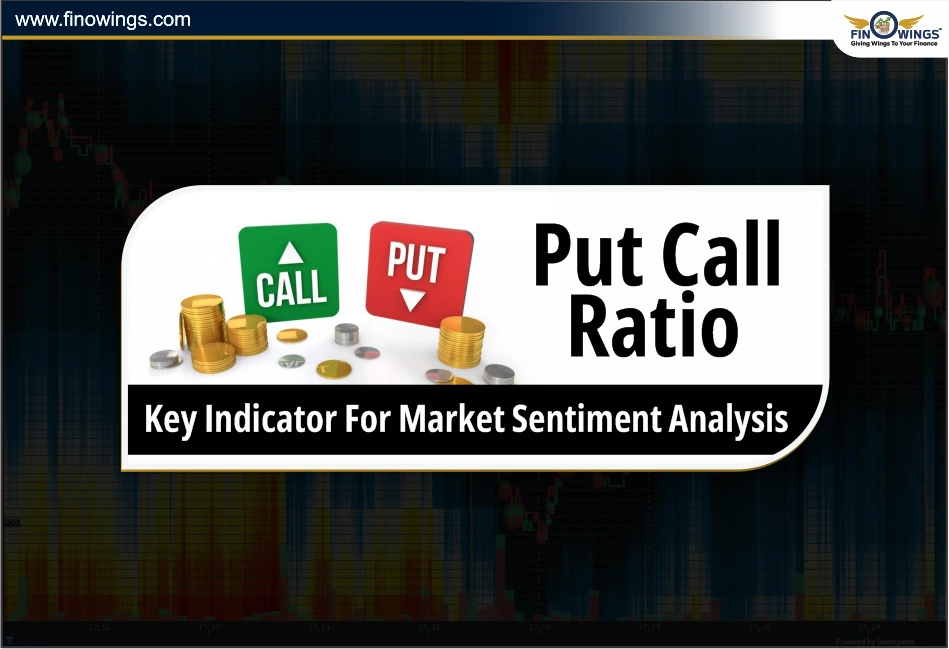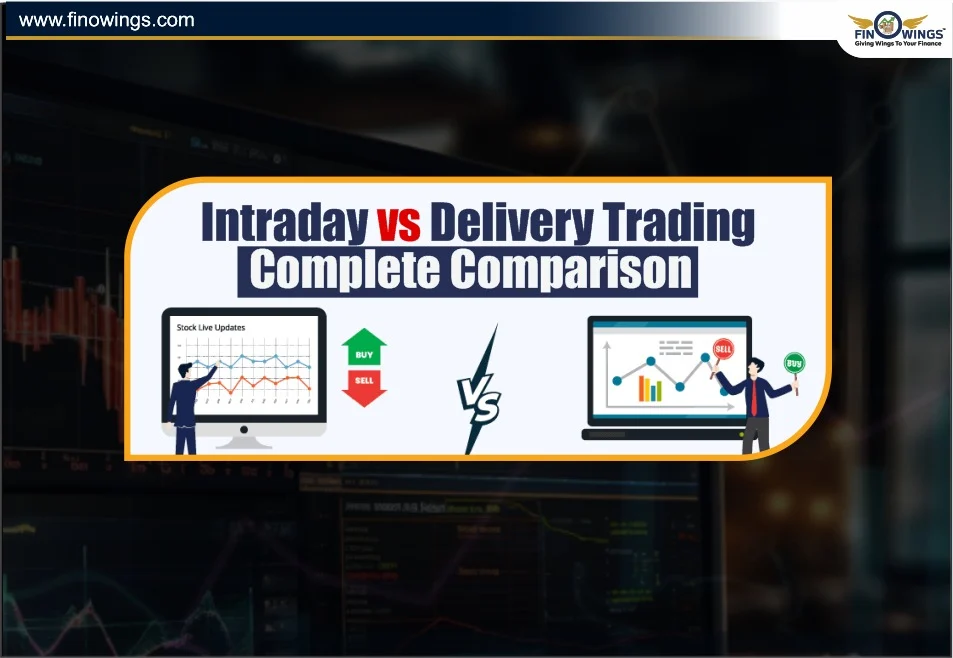Home >> Blog >> Put Call Ratio: Key Indicator for Market Sentiment Analysis
Put Call Ratio: Key Indicator for Market Sentiment Analysis

Table of Contents
- Introduction
- What is the Put to Call Ratio formula?
- Practical Use of PCR in Trading Strategies
- Applying PCR In Various Market Conditions
- How to compute the put call ratio?
- Analysis of Put-Call Ratio
- Interpreting the PCR
- Tips for Traders
- Importance of Put Call Ratio
- Drawbacks of Put Call Ratio
- How to trade using a put to call ratio?
- Nifty Call Put Ratio
- Conclusion
Introduction
The Put Call Ratio (PCR Ratio) or Call Put ratio is one of the important ratios that analyzes options markets to measure investors' sentiment and predict future pricing of the stocks. Observing the volume of put options compared to call options allows traders to ascertain whether the market is bullish or bearish.
What is the Put to Call Ratio formula?
PCR Formula:
PCR = Total Put Open Interest (or Volume) / Total Call Open Interest (or Volume)
Types of PCR
-
PCR (Open Interest) - Concentrates on the open options contracts and helps spot long-term moves.
-
PCR (Volume) - Relies on daily trading volume of options contracts and proves more accurate for short-term assessments.
Calculation of PCR
Let us take this data of ABC stock:
Put OI: 300,000 contracts
Call OI: 200,000 contracts
PCR = 300,000 / 200,000 = 1.5
A PCR of 1.5 means that there are prevailing bearish sentiment in the market.
Practical Use of PCR in Trading Strategies
1. Contrarian Approach: A subset of traders may use extreme readings (over 1.5) bearish readings to take positions expecting a market rally.
2. Trend Confirmation: Growing PCRs could confirm the existing down trend while falling PCRs confirm the up trend.
Applying PCR In Various Market Conditions
1. Bullish Market: PCR often stays below 0.7 during bullish movements.
2. Bearish Market: PCR exceeds 1.3 during bearish movements.
3. Neutral Market: PCR between 0.7 and 1.3 suggesting minimal to no directional momentum indicates a neutral market.
How to compute the put call ratio?
The PCR ratio is derived from the total open interest of put options and the total open interest of call options for a particular market or security. Open interest is the amount of options contracts that are 'alive,' meaning they have not been executed or expired.
1. About the open interests of a certain day
A specific security or market's total open put option interest is divided by the total open call option interest to calculate the PCR. If we want to find the put call ratio of “PQR Ltd” whose shares are quoted on the BSE.
-
The total open interest for put options on PQR Ltd is 10000 contracts.
-
PQR Ltd has a total open interest of call options amounting to 20,000 contracts.
PCR = Total trading volume of put options / Total trading volume of call options
PCR = 10,000 / 20,000 = 0.5
It is established that the put call ratio for PQR Ltd in this case is 0.5.
2. Based on the Trading Volume of A Day
The trading volume for put and call options within a given day can also be used to derive the PCR ratio. This approach makes it possible to gauge the prevailing market atmosphere depending on how trading is conducted within the day. Let’s take the case of “ABC Ltd” for the NSE.
-
The total trading volume of put options on ABC Ltd is 6,000 contracts.
-
The total trading volume of call options on ABC Ltd is 12,000 contracts.
PCR = Total trading volume of put options / Total trading volume of call options
= 6000 / 12000
= 0.5
put-call ratio is 0.5.
It's a wise decision to learn first, before investing to avoid losses in the market. To learn the 'Basics to Advance Analysis in the Stock Market', buy our important and worth Technical Analysis course.
Analysis of Put-Call Ratio
-
And the put-call ratio (PCR) remains a crucial metric for gauging the investor sentiment in the stock market as it pertains to the number of trades made involving each option. It determines how much volume of put options has been traded as compared to that of call options over a given market.
-
Traders typically deploy put options to guard against market drops or engage in speculation based on a bearish market.
-
Call options are deployed with the anticipation of market rises or as a hedge against excessive price increases.
-
A PCR greater than 1 signifies a dominant bearish market because there is a greater volume of put options in comparison to the volume of call options. On the other hand, a PCR lower than one indicates strong bullish sentiment due to the excess of call options over put options.
-
It's worth mentioning that a PCR of 1 does not mean that the market is neutral. Due to the inherent asymmetry between downside risk & upside potential related to put and call options, a relative bias towards buying call options exists with traders. This is why a value of around 0.7 is viewed as a more realistic estimate of investors' sentiment.
-
Higher than 1 or 0.7 PCR level suggests a more dominant bearish sentiment among traders due to excess purchases of put options. This can be the result of increased pessimism due to high market volatility, economic uncertainties, or perceiving assets to be overvalued.
-
A declining PCR that drops below 0.7 and approaches 0.5 is signalling bull market sentiment together with optimism regarding the prospects of the market.
Interpreting the PCR
PCR > 1- Bearish sentiment (more puts than calls).
PCR ≈ 1- Neutral or balanced sentiment.
PCR < 1- Bullish sentiment (more calls than puts).
Tips for Traders
-
Never use the PCR on its own. Always combine it with other technical indicators for smoother analysis.
-
Even the most extreme levels of PCR do not ensure a reversal, so having solid risk management practices is vital.
-
PCR is more useful for indices (like Nifty or S&P 500) than for individual shares of stocks.
Importance of Put Call Ratio
The Put to Call Ratio is important to traders and investors for the following reasons:
1. Market Sentiment
This ratio acts as an overall measurement of the market. Traders and investors can gauge whether the market has bullish or bearish sentiments.
2. Contrarian Indicator
It works as a contrarian indicator. If the Call Put Ratio is at extreme levels, it might imply that the prevailing market sentiment is too optimistic or too pessimistic, hinting that a reversal might happen.
3. Risk Management
When monitoring put and call contracts, traders can evaluate risk and make smarter decisions. A bearish PCR would trigger risk management, whereas a bullish PCR would incite risk-taking.
4. Volatility Indicator
Increased PCR is often related to increased market volatility. More traders and investors are buying put options with the intent of hedging against potential downside risks as put options soar.
5. Leading Indicator
The Put Call Ratio can act as a leading indicator of market movements. This is particularly applicable at extreme levels of either end of the spectrum.
Drawbacks of Put Call Ratio
Although the put call ratio is useful, it is still bounded by some drawbacks.
1. Limited Accuracy
The put call ratio does give an overview of market sentiment, but does not specify exact targets or timings.
2. Expiry-Related Volatility
The options expiry has an effect on the PCR. Market sentiment may be temporarily distorted during a time period when options expire as they tend to skew the ratio.
3. Reliance
It can be risky to make trading decisions based solely on the PCR. Other aspects like technical and fundamental analysis must also be taken into account.
4. Different Perspectives
The Put Call Ratio like many other indicators used in the market, requires cross analysis, hence the interpretations may differ with individual analysts.
How to trade using a put to call ratio?
When trading using a put-call ratio, a comparison of the number of put options and call options available on the market is considered. Concerning the Indian securities market, these steps can be employed for a PCR trading strategy.
1. Understanding Put To Call Ratio
The relationship of interest put options to that of open-call interest is captured accurately using the put-call ratio. Understanding how traders view the market and predicting its market trend reversal becomes easy with this tool.
2. Interpreting PCR values
A large put-call ratio value greater than one depicts a bearish sentiment. Such a case suggests investors are making more purchases towards buying options. This suggests that investors anticipate the possibility of the market deflating. A low put-call ratio PCR value that is below one, indicates a bullish sentiment. There is, therefore, relatively more call option purchases than put, which indicates that there is an anticipation of a market upturn.
3. Using strike price
Analyse the PCR based on the particular options’ strike prices. Some less liquid assets may display lower trading activity, therefore, making the strike price an important consideration to take into account. The strike prices influence the expectations from the market.
4. Accounting for trading volume
Analyse the trading volume for both call and put options concerning a given asset. Focus on the strike price as well as the expiry date to assess the directional movement of the asset in question. Higher trading volumes could also suggest a stronger market opinion.
5. Investigating open interest
Open interest is the total count of contracts that remain unfulfilled for a given option. Use the open interest with a PCR to analyse the volume of traded put and call options over a specified period.
Higher open interest points toward greater activity of the market and possible movements in the price. Less interest indicates a low participation in the market, which could suggest a reverse trend.
Nifty Call Put Ratio
The Nifty currently has a call put ratio of 0.7878.
Conclusion
The Nifty Put Call Ratio acts as an indicator of market sentiments as well as providing insights on potential price changes in the future. A PCR reading greater than 1 indicates pessimism while a score less than one conveys optimism. Aside from other technical tools, traders should rely on PCR to improve judgments.
Remaining PCR values that are too high or too low might indicate some change in the direction of the market, although this is not always the case. PCR is particularly helpful in understanding the behaviour of indices like the Nifty. Coupled with effective risk control measures, these insights can enhance a trader’s decision-making ability when it comes to investments.
Disclaimer
This blog is NOT any buy or sell recommendation. The content is purely for educational and information purposes only. Always consult your eligible financial advisor for investment-related decisions. The author does NOT through this blog intend to involve readers in any investment or trading activities.
Author
Frequently Asked Questions
A PCR of 0.7 for equities is considered good for evaluating market sentiments.
PCR more than 1 means there are bearish sentiments. More Put options are being traded.
PCR 0.75 shows a bullish sentiment in the market.
PCR > 1- Bearish sentiment (more puts than calls).
PCR ≈ 1- Neutral or balanced sentiment.
PCR < 1- Bullish sentiment (more calls than puts).
The put call ratio Nifty can be checked on Nifty trader, Upstox, to access the real-time Nifty data and then use the PCR formula to calculate the call put ratio of Nifty.
Formula of PCR = Total Put Open Interest (or Volume) / Total Call Open Interest (or Volume)



.webp)


.webp)










